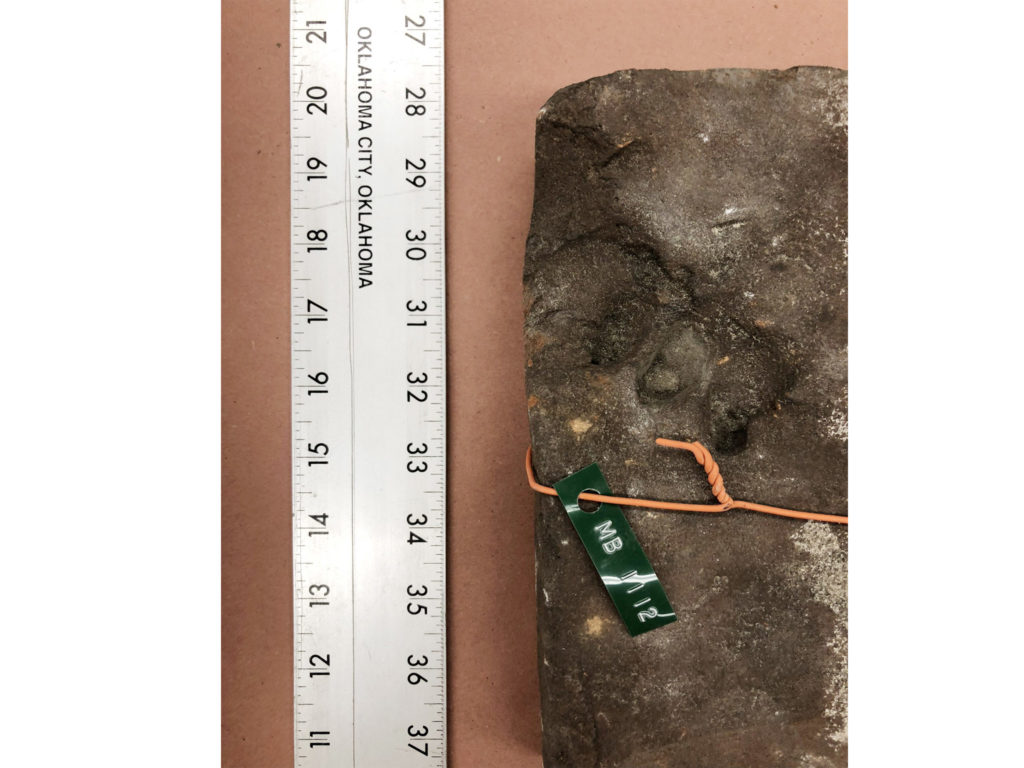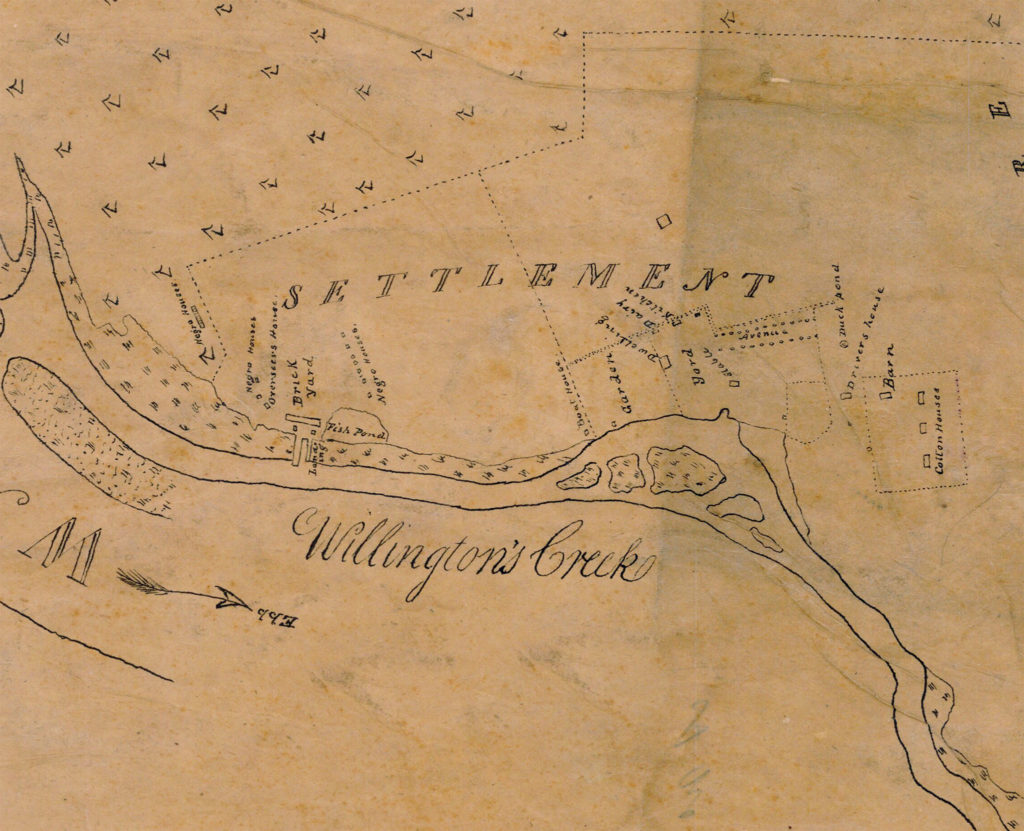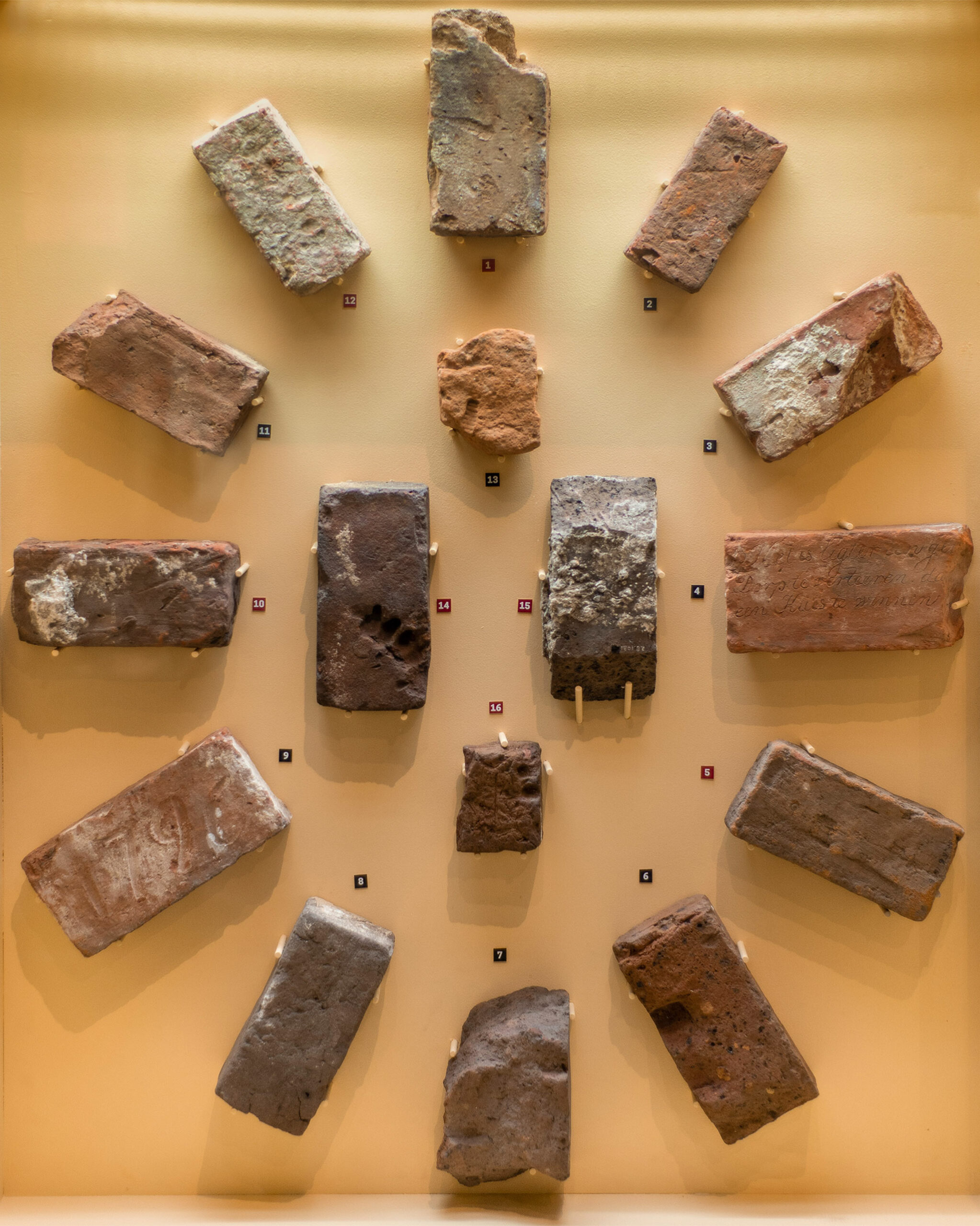Burning Brick: A Lowcountry Industry
What can a seemingly unremarkable brick reveal about the development of the Lowcountry, its historic buildings, and the people who inhabited them? We have recently revised our exhibition on brickmaking to focus on those enslaved laborers and craftspeople who produced the brick, and indeed that built the Lowcountry. On display are bricks from the many kilns that dotted local rivers. The Museum has a sizeable collection of brick samples from landmark Lowcountry buildings and from several brick-producing plantations. These bricks were collected over the last century, beginning with the collections of architect Sam Stoney in the 1920s. But recent archaeological and documentary research has provided new details on the depth and breadth of this industry.
While rice is the best-known product from Lowcountry plantations, brick production was an important enterprise, providing as much as a third of the plantation owner’s income. Plantation owners on the Wando, Ashley, and Cooper rivers produced brick for the Charleston market. Brickmaking required suitable clay, sand to temper the clay, fuel to fire the kilns, cheap labor, and ready transportation to market. Enslaved Africans produced and transported the bricks, and the “Brickmaker” was a skilled craftsman. The Wando River lands of Christ Church and St. Thomas Parishes had all of the ingredients, plus soil unsuitable for rice or indigo. Between 1740 and 1860, there were 79 recorded brick makers, half of them located on the Wando River.

Archaeological surveys in the last few decades have provided new information on these Wando River kilns and the landscapes of brick production. In 1976, Elaine Herold of The Charleston Museum surveyed Grove plantation in advance of construction of the Amoco (now BP) plant. She retrieved brick samples from the kilns, as had Samuel Stoney in the 1920s. My own survey work for the U.S. Forest Service in 1980 revealed brick kilns along the Wando, near Cain Hoy. Visible in the woods were rectangular wetlands, remnants of the clay extraction pits, an improved river landing of broken brick fill, and a line of brick piles from the chimneys of cabins occupied by the enslaved workers at the kiln.
The most detailed research was conducted by Dr. Lucy Wayne of SouthArc, Inc. The Florida-based firm surveyed and excavated sites on the Dunes West/Park West tracts in Mt. Pleasant in the 1990s. They explored the brickmaking operations at the Lexington Plantation kiln site, Starvegut Hall, and the Wando Plantation. A detailed plat of Lexington plantation shows an extensive brickmaking enterprise, including a residential complex for the enslaved workers. This research would serve as the basis for Dr. Wayne’s dissertation at the University of Florida, “Burning Brick: A Study of A Low Country Industry”, completed in 1992. This remains the basic resource on the Wando River industry.

New technologies, including petrographic thin section analysis, x-ray fluorescence, and x-ray diffraction, are now used to analyze the clay content of bricks, compare them to local clay sources, and determine a source. Dr. Denis Brosnan of Clemson University analyzed brick from our 2009 excavation of the redan at Tradd Street and determined that brick in that section of the city wall was from the Ashley River, perhaps on the Charleston peninsula. Clemson graduate students Kristina Lanpher and Jackie Don analyzed brick using these methods; Kristina studied Ashley River brick in 2011 and Jackie studied brick from city fortifications in 2015. Bricks from the collections of The Charleston Museum were used in all of these studies. Given their new significance, current Clemson graduate student and Museum intern Kyunhea West has completed a detailed inventory of our collection.
Our new exhibit highlights the importance of brick production on Lowcountry plantations, the process of making brick, the people who produced them. Our extensive brick collections from history and archaeology serve as a laboratory for new research on this centuries-old enterprise.
-Martha Zierden, Curator of Historical Archaeology


